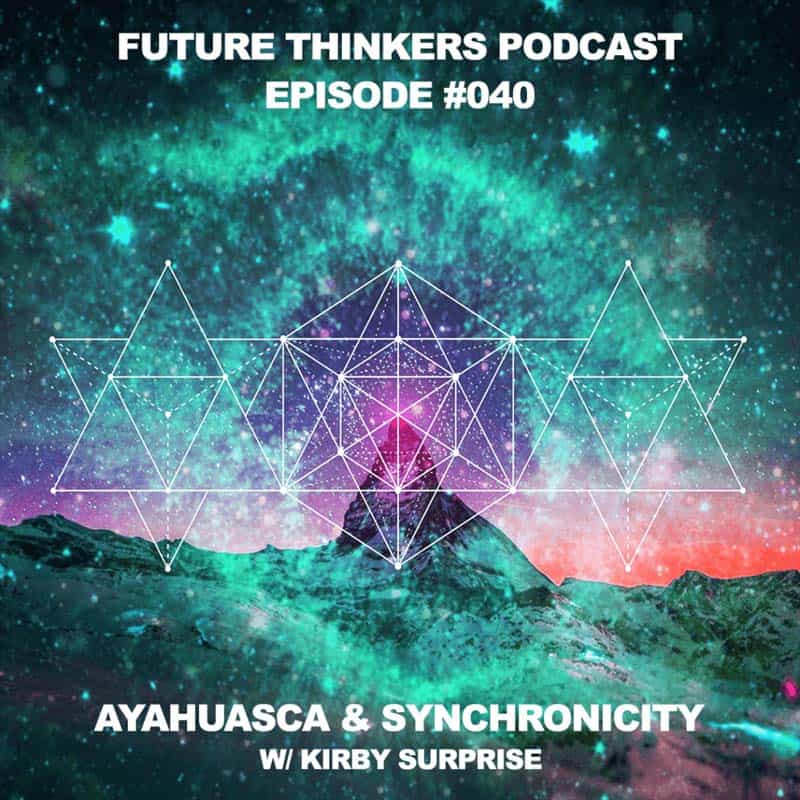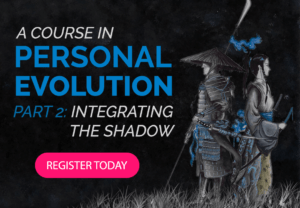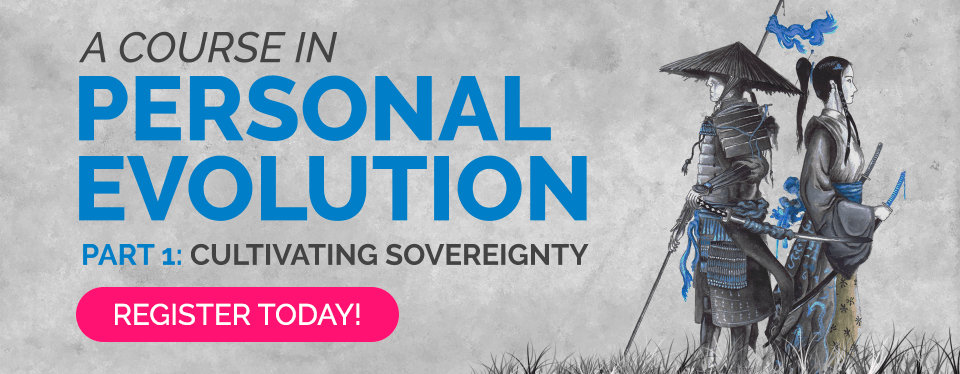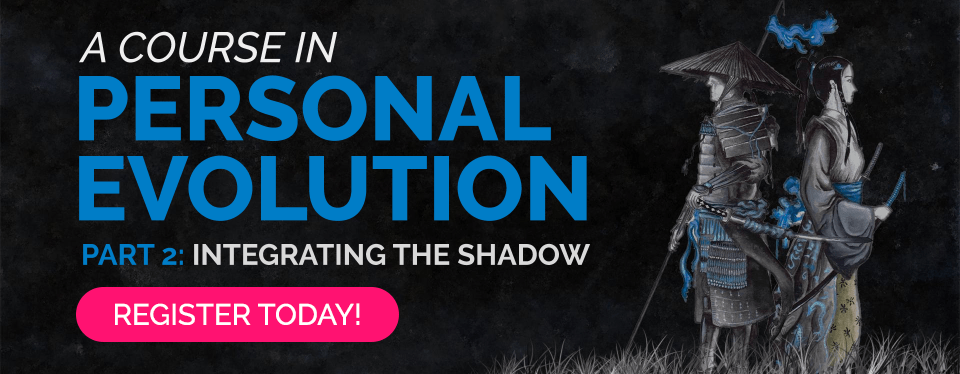Podcast: Play in new window | Download
Euvie: It’s interesting actually, you talked about your personal spirituality a bit, and I appreciate that you didn’t let that seep too much into your book. But I’m curious just to kind of hear about your own personal biased perspective.
Kirby: Well, okay. My own personal perspective is I’m a shaman, and shamanism is about [00:02:30] changing your state of consciousness and exploring.
Euvie: Are you familiar with Jason Louvre (?)?
Kirby: No.
Euvie: Okay, so it’s pretty much what this guy’s about. He has learned the magical and shamanistic traditions from around the world for the last 15 or 20 years. He’s teaching these practices to people. And I was binging on his videos yesterday and he’s talking all about this stuff, and he was talking about creating your own reality not through effecting the world but kind of through changing [00:03:00] your own operating system.
Kirby: Yeah, yeah that’s exactly what I’m suggesting people do. First, you’ve got to recognize your operating system and I’m hoping people will use synchronicity to do that. The overall model that I’m seeing is the theosophical model seems to be correct across all cultures, all religions. I mean, I’m not into the organization but the sort of Alice Daily bread down of planes of consciousness generally seems to be correct. [00:03:30] And most shamans who, you know, run around on the astral plane and talk to folks there and, you know, eventually if they’re lucky they bump into the mental plane. The patterns seem to be pretty much the same. So, you know, theosophy had some political problems but, you know, if you read it the whole thing, if you read the entire movement from beginning to end, they were making an attempt to translate all the spiritual doctrines [00:04:00] into something that made sense. Generally, it seems like they did a fairly good job.
Mike: How does psychedelics play a role in generating synchronicities?
Kirby: Well, I’m trained as an Iowa Scarrow (?).
Mike: Really?
Kirby: My doctoral dissertation was the effect of hallucinogens on personality traits. Whenever you alter the brain chemistry, you get events that match the alterations. So, ayahuasca, for instance, is incredibly stable. [00:04:30] You can get synchronistic events but not usually, not much. Serotonin based drugs, like LSD, cause huge influxes of very powerful synchronistic events but they’re also reflectively creating huge imbalances in the way the brain processes information at the same time.
Mike: In a detrimental way?
Kirby: Not always, you know. Looking at the research on, you know, how detrimental [00:05:00] each drug is, for instance I’ve done complete literature reviews on all the research of, you know, which drugs do what. Hallucinogens are relatively harmless. There are some toxins in things like psilocybin mushrooms and cactus. But they generally don’t cause a lot of psychological harm. But the brain is going to change the way it processes information during. You can have amazing spiritual experiences on them but, you know, [00:05:30] on things like setron drugs like LSD, you also have to know that if you take two large a dose the imbalance is going to, you know, wack your computer enough so that your personality disappears and dissolves and people go through these dark nights and, you know, of the soul and death experiences stuff, simply because the computer’s not working that well.
Psychologically, the research now is they’re doing psilocybin for people who are terminal to better adjust them to upcoming death experiences, that’s working really [00:06:00] well actually. The original hope for LSD was that it was a treatment that, you know, you could give someone a set series of maybe six experiences and it would cure their neurosis or their alcoholism or whatever it was that they were trying therapy on and that just doesn’t work, you know. The personality rebuilds itself in basically the same pattern. MDMA looks like it’s going to be really good for post traumatic stress disorder. [00:06:30] Ayahuasca is stable as a general accelerant, it’s sort of like the quickening, you know. You’re boosting your brain’s activity rate by about 120 percent, which means that your environment doesn’t change but you get an overall of all this other brain processes. So, a lot of the stuff you see is subliminal images, the legends about it producing telepathy are true. The thing is, you know, most people can’t stand to take this stuff very often because it’s not an easy ride, usually. It takes about two [00:07:00] year apprenticeship before you stabilize out on this stuff and can use it at will.
Mike: Interesting. What would that apprenticeship mean? To teach it or to, what do you mean by stabilize it on your own?
Euvie: Like, to become a traveller who is able to gain anything from it, or to become a guide?
Kirby: Well, you can do circles and be a guide in the [inaudible 0:07:22.4] of experience, you know, whether you’re a good one or not, you know, is up to the results. What’s the best way to put this. [00:07:30] It’s a good general amplifier, so parts of the transpersonal world or, you know, psychic world that are unavailable normally become available temporarily. However, the brain is also like overclocked while you’re doing this. So, it tends to process personal material that needs to be done, it overcomes the neurological patterns that help people press material in place. So, basically, it brings out all your personal demons real quick.
[00:08:00] But it also resolves them, you know. It also gives the brain the processing power it needs to be therapeutic. If you’re interested in the neurology and biochemistry of it, I wrote an article on the internet called the Ayahuasca Effect, which talks about all the neurotransmitters and what produces the experience and what the benefits of it are. As a substance, my dissertation was I took a group of frequent users of North America, so I filtered out like [00:08:30] the [inaudible 0:08:30.9] users and the [inaudible 0:08:33.0] users and went with Westerners who were not doing it as part of a church because the belief systems aren’t confounding.
I found that overall it has mild beneficial effects across about 20 different scales on the MMPI, but it’s not innately that way. It’s simply producing more neurological energy. So, the folks that said that, you know, it’s an absolutely [00:09:00] sacred medicine and, you know it’s permanently beneficial. They were wrong. And the people that said it’s an evil drug because it’s a hallucinogen, they weren’t quite correct either. It’s a general amplifying tool. Shamanism is about trying to play with your experience to learn something that you can bring back that might be a benefit to the people around you.
I don’t consider it, you know, just personal exploration sort of shamanism. I’ve tried to add what I’ve learned to my practice, [00:09:30] some sort of a licenced shaman because I’m a licensed psychologist and clinician. But, you know, you have to be careful. Because, you know, there’s always people that are going to misuse it. They’re going to take too much of it, they’re going to enter it without the certain setting. But it’s tricky. Ayahuasca is DMT and four anti-depressants, harmine [inaudible 0:09:51.2].
Mike: I didn’t know those were anti-depressants.
Kirby: Yes, harmine was the first anti-depressant. [00:10:00] Between the first and second World War they had this big TB outbreak and they were trying all kinds of stuff on troops with TB, to see if they could help them. And they tried giving them large doses of harmine and did nothing for the TB but it approved their mood tremendously. And they had discovered the first anti-depressant. It’s still the best anti-depressant. The problem with it is that, you know, if you’re taking it and do [inaudible 0:10:28.5]. [00:10:30] You can give yourself a hyper tensive reaction and stroke on it. So, if you’re going to take it you have to be smart enough not to drink beer, wine, not to eat aged proteins, stuff like that.
Like, you know blue cheese, things like that, ages. So, the drug companies couldn’t deal with the liability. So, they decided to not prescribe them very often and they came up with a whole slew of other ones. But the MAOIs are still the best anti-depressants. They’re action in ayahuasca, [00:11:00] besides each one of those three harmine variants and the DMT molecule is only like two or three atoms off of real serotonin. So, they lock onto the serotonin receptors in the brain quite well. And they give this incredible anti-depressant reaction while the brain is accelerated and able to work on its issues better. So, it gradually has a long-term beneficial effect. The original studies of people taking ayahuasca in Peru [00:11:30] found that the populations that were taking it were healthier physically and emotionally, better psychologically organized than the matched control groups.
Which is, you know, where I started getting interested in it. DMT itself is fun, obviously it’s a gorgeous experience. The smoked version by itself is not particularly shamanic though. You know, it’ll give you short glimpses of what your brain is actually doing behind the scenes. [00:12:00] Those floridly lovely visions are neuroprocessing. You are seeing data processing occurring in your brain in real time, okay. Those images all and every colour, all have data [inaudible 0:12:17.6] to them. Every little image within an image within an image in a pattern in a larger pattern is the brain processing associations and sensory inputs. [00:12:30] It’s a wonderful way to get familiar with the miracle of how your own computer works. Not particularly valuable shamanically and doesn’t really last long enough for like a great spiritual gig. I think the liquid ingestible versions of ayahuasca last four hours.
They, you know, don’t have to necessarily be as intense, and I think they’re much more tolerable. My impression is that you can’t just smoke DMT every day because, eventually, you know, [00:13:00] you’re going to exhaust the brain cells and mitochondria are going to burst and, you know, you’ll wind up with some cell loss. The liquid version you can take every day. It’s harder to tolerate, but there’s nothing toxic about it. The LD50 on ayahuasca, typical liquid dose is about 25 millilitres, the LD50 is 7 litres, 7,000 CCs. And at that point, the water shuts down your kidneys so there’s zero toxicity. Sort of the conundrum is the exalted states of consciousness [00:13:30] people look for are all corollaries of very high activities of cell firing in the brain.
So, you know, if you’re going to like try to touch the face of God, basically, you’re going to be burning your neurons to do it. And what happens to some people that, you know, have this like sort of LSD after affects when they’ve gone on too many rides is you keep the cells active for too long, the mitochondria that produced the [inaudible 0:13:57.6] triphosphate to power the [00:14:00] cell’s exhausts, and then the mitochondria dissolve releasing toxic crap that kills the cells. It’s the same thing that happens to meth users, you know. What burns them out is they jack the cellular activity and the neurons up so high that cells die eventually.
I think that done reasonably, your brain can tolerate almost anything. But, you know, that’s sort of the skill involved is, you know, being rational about what you’re doing, not doing harm with it at the same [00:14:30] time. I think one of the most unfortunate things in most societies is they place, you know, legal limits on the things you can experiment with because one or two percent of people are going to do themselves in with it. And that restricts the freedoms, you know, and the cognitive freedoms of everybody else.
Mike: Yeah. What are your thoughts on micro dosing?
Kirby: With ayahuasca it works quite well. I take a small amount of it every day.
Mike: Really?
Kirby: Yes, for years. [00:15:00] Many years.
Euvie: Wow.
Mike: Whoa.
Kirby: Yeah. So, mostly what I do is, DMT is minimal. I use the first plant, the vine, I get the harmine out of the Norman version, which is the Syrian root seeds. I refine it myself. And what I do is I do it before I go to sleep. And on the theory that most of your brain processing occurs while you’re sleeping. Most of the upkeep and, you know, memory consolidation all happens, you know, while you’re sleeping. [00:15:30] So, I give my brain its little boost while I’m asleep, you know. So, it can do that and it works, it works quite well. The other strange effect it has is the Syrian root, the harmine, is I seem to be aging slower, you know. I’m almost 60 and physically I’m about 43 or 44. When I stop taking it, my hair starts going grey and when I go back to taking it my hair colours again.
And I think what’s happening is the harmine does is the [00:16:00] MAOI in it keeps your natural serotonin dopamine and no epinephrine from being wiped out between firings of your nerves, you know. Between neurons there’s a synaptic gap which usually gets clean between each firing, which means that the body sends out chemicals that destroys those modulating neurotransmitters. When you do an MAOI that is like in the vine or the seeds, it stops that from happening. The monoamine oxidase gets wiped out. So, [00:16:30] your natural levels of serotonin, dopamine and no epinephrine stay high.
And I think that increases the neurological efficiency of the brain considerably, including the brain’s ability to regulate physiological responses and processes. There are legends about these [inaudible 0:16:46.7] all over South America who live well past 100, and they’re still pretty spry. And they say it’s because of this medicine. And I think what’s happening is it’s giving them [00:17:00] enough neurotransmitters on board so the system can properly regulate itself instead of being, you know, depleted by stress and poor nutrition and all that kind of stuff.
Mike: Wow.
Euvie: What do you think about the Western magic tradition? Have you had any experience with that yourself?
Kirby: Yeah, I’ve pretty much, there’s like little pieces I haven’t delved into but I’ve pretty much been through all of it. If I had to like peg myself as a tradition, I’d sort of say I was a Buddhist [00:17:30] Pagan Shaman.
Mike: This is so interesting, this additional layer to you that wasn’t talked about in the book.
Euvie: Yeah, I had a hint that there might be something. Because I think you actually mention magic in the book once, but you kind of just glaze over it and then move on to something else.
Kirby: Yeah, you know, synchronicity is probably the core of all practical magic. I mean, real magic is thought form engineering, you know. Just that that’s what it comes down to, is understanding how to construct and utilize thought forms. [00:18:00] Which is what causes synchronicity anyway. The rest of it is ways to focus your attention, you know, all the ceremonial stuff, all the symbolic stuff is ways to keep your attention and your emotion on the same thing, the same outcome, the same symbol. Which is why magic gets really tricky. Magic is supposed to be working on the emotional and mental bodies and their connection to the soul. It’s not supposed to be used to, you know, make your Bitcoins go up and down, you know, or whatever it is.
[00:18:30] I mean, it’s supposed to be developmental. You know, that’s what real magic is. I think, you know, there’s nothing wrong with, you know, looking for mates and material support and stuff. But, you know the real uses of it are spiritual. You know, I think that’s where, you know, a lot of modern shamanism falls down, a lot of traditional too is, you know, they have this disconnect between magic and spirituality. Which is completely artificial.
Mike: This is interesting. Someone mentioned before, who we had on the podcast, [00:19:00] Vinay Gupta, exactly what you said, that we’ve evolved to manipulate probabilistic events and that, when you tie certain things to reproduction or just the basic level evolutionary drives, the ability to create synchronicities increases vastly. Tying in things that we want to the production in our relationship, so having kids. And it’s interesting how much the synchronicities improve if you want [00:19:30] a house, or you want a lot of money, or something like that. You visualize the house with the wife with the kids playing, and it seems to, that seems to be the sort of magical effect in this.
Kirby: Absolutely. Well, if you look at the Catholic church in the 12th century, I mean, the reason they did all their [inaudible 0:19:48.6] against sexuality because they believed people were using sex magic against the church.
Mike: What?
Kirby: You know, when in fact, you know, anything that produces pleasure gives out [00:20:00] a positive signal, you know. And, you know, it does work. You know, the other thing is it’s what you’re looking for, too, you know. It’s like if you keep yourself in a positive space that’s what reflects. And, you know, it’s not an immense influence, but if Ryan was correct and you’re getting a three to six percent bump in probability, then on a daily basis that’s three to six percent more opportunity in the [00:20:30] environment that you had before. And, you know, that’s actually a huge amount. I mean, people look for jobs and strange things happen that provide them with the jobs, it’s a reflection of what they look for.
Mike: Do you think people can improve their synchronistic abilities beyond that percentage?
Kirby: Yeah. Absolutely. It’s progressive. So, the more you focus, the more you look for them, the more they happen. Here’s the sort of conundrum though. [00:21:00] The vast amount of your emotion and thought are unconscious. Like I said, the conscious part’s about as big as a walnut, the rest of it’s automated. You can’t function being aware of a huge amount of the automated processes. It’s too distracting. That’s why the brain’s specialized. You can get to the point where almost everything that happens to you is synchronistic in some way.
But you’re flooding yourself with information, you know. You start to experience [00:21:30] not only the major things you’re concerned with, but also the minor things you’re concerned with and all the associations to all those things, and all the associations to those associations. So, you know, you can basically wind up walking around with your head up your ass if you’re not careful.
Mike: Which is why you turn it off every once and a while.
Kirby: Yeah. And for me, the opportunity for self-delusion is too great, you know, to like run it up to that level. I mean, I have a family, I have kids, and a job, and it’s like [00:22:00] those are the real concerns, you know. Synchronicity is play for me. And there’s parts of me I can check in with, but you know it’s sort of like when I use tarot cards. I gave up reading tarot cards because I got so good at synchronicity that the cards always said exactly what I was thinking, you know. It’s like, I even had it, which you can talk to your unconscious, it’s a person through this. That’s my most fun thing to do is you pretend that your own unconscious, [00:22:30] which is your best partner in the world, is talking to you through the events and the environment, you know. And of course, this thing it doesn’t know but it’s fun because like, one reading it’s really important life issue and I needed I solved and I got desperate enough to grab my deck of tarot cards, which I only did twice a year, and I, you know, did this cross layout.
And the meaning of it was stop asking me for meanings [00:23:00] that you already know, you know. The reading said, “Yes, I’ll tell you anything you’re already thinking. Is that what you want?”
Mike: I do that, too, when I’m walking around especially by myself. I pretend my subconscious is talking to be in the events external to me.
Kirby: Excellent. Lots of games you can play. You know, it really is about learning self-awareness, you know.
Mike: Is there a reason you haven’t put more of this content out on the internet?
Kirby: I had a busy [00:23:30] family life and friends and a job, and the whole idea with the book was to keep myself out of it. So, like I watched The Secret come out and the amount of self-promotion that goes in is like nauseating. And I just am not wired for that, I mean, I had my own shamanic groups and circles and I was an [inaudible [0:23:51].0] and it’s like, no, you know, people want to make it about the guy who’s delivering the message. And too many people are trying [00:24:00] to make their money delivering a message, and I don’t want to do that. I’m a clinician. You know, I help people face to face, I’m a real psychologist.
I don’t want to, you know, usurp somebody else’s reality, you know, or become the focus of somebody who should be focusing on themselves. So, the idea of the book was to try and give examples, personal examples, of what it’s like but take myself out of the picture. I do believe [00:24:30], and maybe delusional, that the people who need to find this book badly enough it’ll come to them. They will find this model. They will be confused about synchronicity, search the internet, and they’ll bump around, and you know, they’ll run into this idea that you’re doing it. So, that’s the basic intent, you know. I don’t want to be the guy like promoting his book all over the place, I just want the information to be out there and available.
Mike: So, if something happened like someone’s super famous [00:25:00] who talks about this kind of stuff promoted your book and all of a sudden you had thousands and thousands of followers, would that be a negative thing?
Kirby: Yeah, I mean, I had that when the book first came out. I mean, I just did AM coast to coast again a couple of weeks ago, it’s like a 12 million world wide audience. But I walk a line of making sure I’m not self-promoting at the time. People are the source of this, it’s not me, it’s not like, you know, aliens or magical owls, you know, people are doing this themselves. And distracting [00:25:30] people’s attention from that is a disservice, you know, it’s a simple concept really, I mean, you can go down the rabbit hole of theory forever, you know.
And it’s fun, but the simple concept is, you know, don’t believe stuff just because you think it and you are affecting the meanings you’re perceiving in your environment. People don’t need training programs to realize that. They need to play with it.
Mike: Right. They need to experiment. Interesting. I’m a little sad that this information isn’t more out there, [00:26:00] but I mean it doesn’t affect me personally. But the network we’re a part of would definitely appreciate this and every time I ask, “Have you read this book? Have you read this book?” It’s a, “No.”
Kirby: Well, you know I’m willing to talk to people. I’m not willing to give my life over to promoting stuff though.
Mike: Yeah.
Euvie: How do you balance the sort of the normal job quote unquote, and the family life with all this stuff?
Kirby: By necessity.
Mike: Probably less visibility Euvie, I would imagine.
Kirby: Yeah, I mean, well the thing is, when I first started writing the book [00:26:30] my biggest fear was that, you know, I would be regarded as a crank, because no one came out with this before. So, I got the book published and I was, you know, worried because, you know, I got this really conservative job. But it turns out that the academic world, the neuropsychic world and the physicists all backed me. Everybody, you know, I got some really heavy hitters said, “Yeah, that’s how it works. We think so.”
Then when I started teaching people how to work with our clients, you know, the ones that they thought were psychotic then taught them how to actually produce [00:27:00] the events, it became pretty self-evident that it worked. So, it became a lot easier. It’s the same gig for anybody with a professional career and kids and a family, you know. There’s times when it’s difficult and you do the best you can and you always give the kids the priority, you know.

In this second part of our interview with Dr. Kirby Surprise on Synchronicity, he delves
into topics which he refrained from putting in his Synchronicity book. This episode is about his personal views and mythology around spirituality, synchronicity, shamanism, ayahuasca and magic.
Dr. Kirby Surprise on Ayahuasca and Synchronicity
Trained as a Ayahuascero in Peru and having a PhD in clinical Psychology puts Dr. Kirby Surprise in a unique position of being a sort of a licensed shaman.
He explains that psychedelics are a general amplifying tool and talks about the ways they can be beneficial, but also harmful and even deadly to neurons when done too much or with the wrong set and setting.
Dr. Kirby Surprise explains how different types of mind altering substances affect our ability to produce synchronicities, and how to use them to connect to our subconscious.
The conversation continues into the beneficial effects of MAOI compounds like harmine on mood disorders and ageing.
He also touches on his experience with studying the western magic tradition and explains his understanding of how it works.
Don't believe stuff just because you think it. Click To TweetIn This Episode of Future Thinkers Podcast:
The art of changing your mental operating system
The benefits of ayahuasca and other psychedelics
DMT as a visualization tool for mental data processing
Microdosing with psychedelics
The positive effects of harmine for depression and ageing
How to talk to your unconscious through synchronicities
Synchronicity is the core of practical magic. Real magic is thought form engineering. Click To TweetQuotes:
“I think one of the most unfortunate things in most societies is that they place legal limits on the things that you can experiment with, because one or two percent of people are going to do themselves in with it. And that restricts the cognitive freedoms of everybody else.” – Dr. Kirby surprise
“The original studies of people taking Ayahuasca in Peru found that the populations that were taking it were healthier physically, emotionally, and better psychologically organized than the matched control groups.” – Dr. Kirby Surprise
Mentions and Resources:
- Dr. Kirby Surprise on the science of synchronicity (Part 1 of this interview)
- The ayahuasca effect article by Dr. Kirby Surprise
- Dr. Kirby Surprise’ Ph.D. work on Personality Traits of North American Ayahuasca Drinkers
- Jason Louv
- The useful effects of harmala alkaloids in syrian rue seeds (aka peganum harmala seeds)
Recommended Books:
- Synchronicity: The Art of Coincidence, Choice, and Unlocking Your Mind by Kirby Surprise
- Food of the Gods: The Search for the Original Tree of Knowledge by Terrance McKenna
- Esoteric Healing: A Treatise on the Seven Rays by Alice Bailey
- Synchronicity: An Acausal Connecting Principle by Carl Jung
More From Future Thinkers:
- How Psychedelics Changed My Life (FTP021)
- DMT – Crazy Psychedelic or Portal to Other Dimensions? (FTP022)
- The Three Bodies and the different levels of consciousness (FTP020)
Thank You to Our Sponsor!






